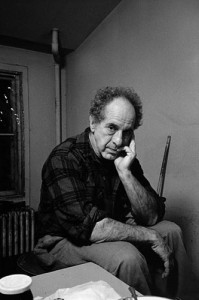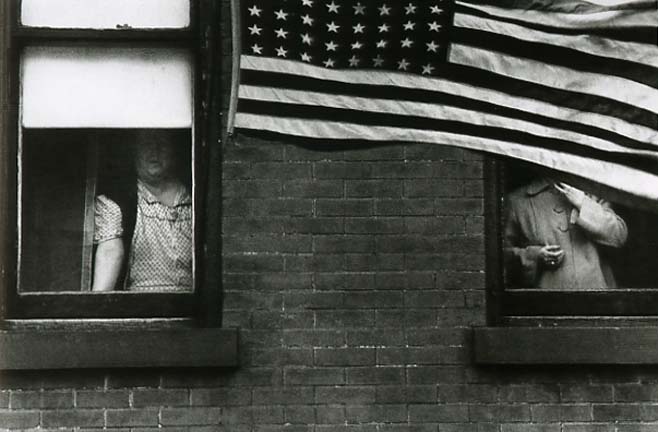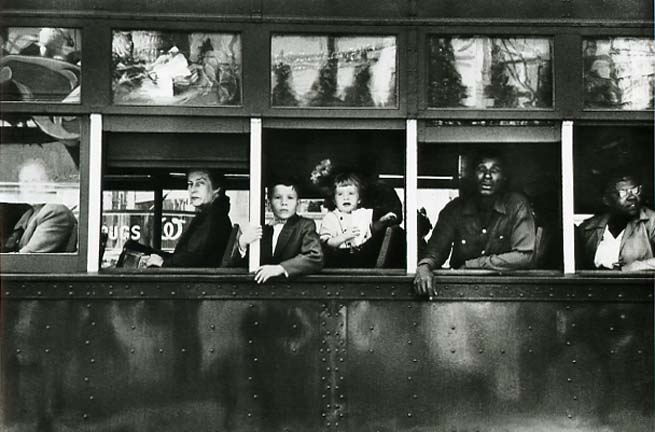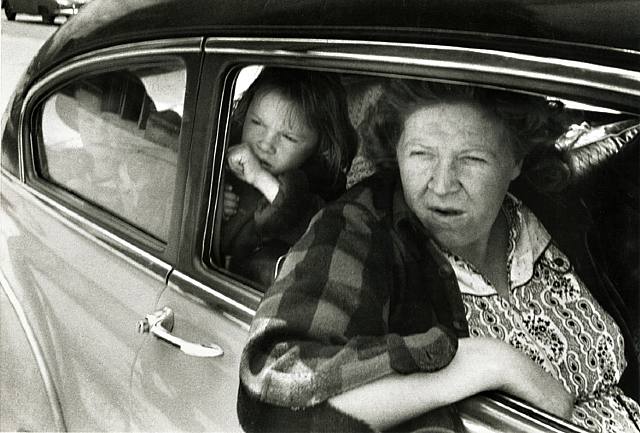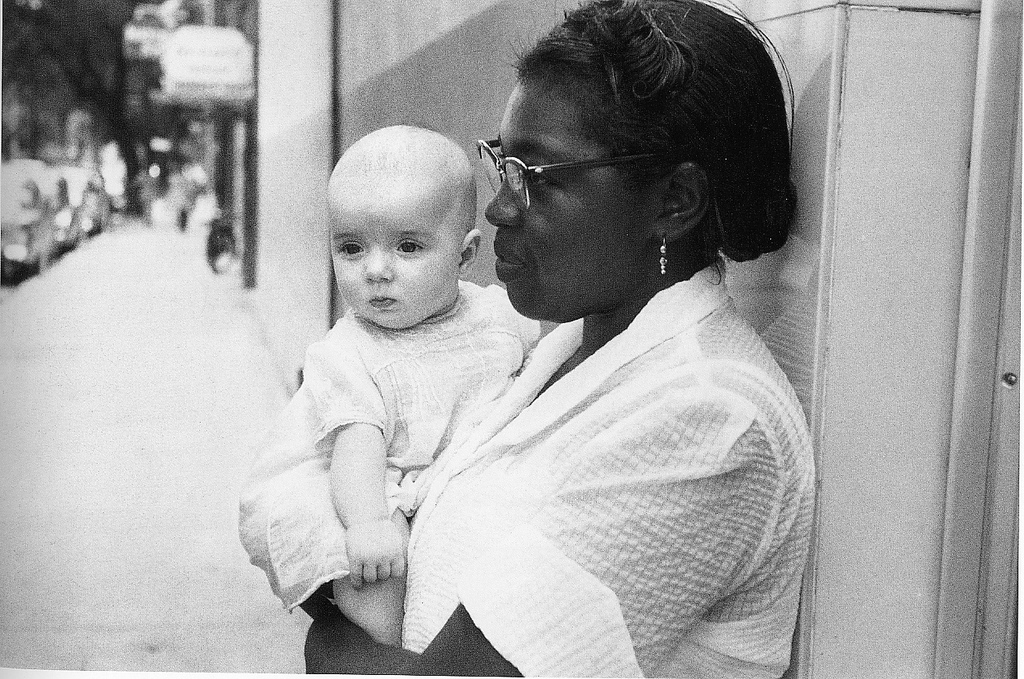Monthly Archives: November 2011
09
Nov 11
Herman… bad timing buddy…
Mr. Cain, it’s probably not a good time to say anything that sounds the least bit sexist… just saying.
09
Nov 11
Oops…
ROCHESTER, Mich. — It’s rare that a politician evokes pity, but in 55 seconds during Wednesday night’s presidential debate, Rick Perry managed it.
The Texas governor promised to eliminate three federal government agencies, and then searched his memory — for what seemed like an eternity — to name a third…
Buh-Bye Rick…
09
Nov 11
Robert Frank: Born This Day in 1924
Robert Frank, Photographer
November 9, 1924 – Still Shooting
“When people look at my pictures I want them to feel the way they do when they want to read a line of a poem twice.” – Robert Frank
Robert Frank is an 87 year old iconic American Photographer. Frank was born in Zurich. He is an important figure in American photography and his most notable work is the 1958 photographic book titled The Americans.
Frank was born in 1924 which allowed him to capture post war images which earned him modern-day comparisons to Tocqueville as his images were fresh and skeptical perspective of American society. He would later use film and video, and experimented with that medium.
Frank attitude to his fame is indifferent, fittingly, as his works chronically not celebrities but the marginal American on the street. It was his skepticism with secular religion of wholesomeness and cheer that gave him a unique visual.
A quote from photographer Elliott Erwitt about Robert Frank and his black and white photography:
Quality doesn’t mean deep blacks and whatever tonal range. That’s not quality, that’s a kind of quality. The pictures of Robert Frank might strike someone as being sloppy – the tone range isn’t right and things like that – but they’re far superior to the pictures of Ansel Adams with regard to quality, because the quality of Ansel Adams, if I may say so, is essentially the quality of a postcard. But the quality of Robert Frank is a quality that has something to do with what he’s doing, what his mind is. It’s not balancing out the sky to the sand and so forth. It’s got to do with intention.
The Americans showed a different America than the wholesome, nonconfrontational photo essays offered in some popular magazines. Frank’s subjects weren’t necessarily living the American dream of the 1950s: They were factory workers in Detroit, transvestites in New York, black passengers on a segregated trolley in New Orleans. Frank didn’t even get much support from the art world, he recalls.
“The Museum of Modern Art wouldn’t even sell the book,” Frank says. “But the younger people caught on.”
“Robert Frank…he sucked a sad poem right out of America onto film, taking rank among the tragic poets of the world.” – Jack Kerouac, Beat Generation poet and novelist
“I’d never seen anything like it, Robert Frank came out here and he just showed that you could see the USA until you spit blood.” – Ed Ruscha, photographer
09
Nov 11
Old people getting richer, young people getting poorer
 The age-based wealth gap is big and growing, thanks to younger Americans’ debts
The age-based wealth gap is big and growing, thanks to younger Americans’ debts
By Alex Pareene (A young writer at Salon)
Have you noticed how most of the Tea Party people were sort of old, while most of the Occupy Wall Street people are fairly young? Here’s an interesting factoid, from the USA Today: Old people are much, much richer than young people. According to the Pew Research Center, Americans 65 and older are 47 times richer than those 35 and younger.
It makes sense that old people would have more money than young people, because they have been working and saving longer. But this wealth gap is massive by historical standards. In 1984, old people were a mere 10 times richer than young people. Not only have old people gotten richer since then, but the median net worth of households headed by young people has declined considerably.
Households headed by adults ages 35 and younger had a median net worth of $3,662 in 2009. That marks a 68% decline in wealth, compared to that same age group 25 years earlier.
Over the same time frame, households headed by adults ages 65 years and older, have seen just the opposite. Their wealth rose 42%, to a median of $170,494.
It gets worse, for young people: “37% of the young households held zero or negative net worth in 2009, up from 19% in 1984.”
Boy, so what are all these old people complaining about, so much? (Immigrants, mostly.)
Continue reading →
09
Nov 11
Ancient Libyan Cities Found

Satellite image of area of desert with archaeological interpretation of features: fortifications are outlined in black, areas of dwellings are in red and oasis gardens are in green. (Credit: Copyright 2011 Google, image copyright 2011 DigitalGlobe)
Castles in the Desert: Satellites Reveal Lost Cities of Libya
ScienceDaily (Nov. 7, 2011) — Satellite imagery has uncovered new evidence of a lost civilisation of the Sahara in Libya’s south-western desert wastes that will help re-write the history of the country. The fall of Gaddafi has opened the way for archaeologists to explore the country’s pre-Islamic heritage, so long ignored under his regime.
Using satellites and air-photographs to identify the remains in one of the most inhospitable parts of the desert, a British team has discovered more than 100 fortified farms and villages with castle-like structures and several towns, most dating between AD 1-500.
Continue reading →
08
Nov 11
Rickie Lee Jones: Born This Day in 1954
 Rickie Lee Jones
Rickie Lee Jones
November 8, 1954 – Still Rockin’
Rickie Lee Jones (born November 8, 1954) is an American vocalist, musician, songwriter, and producer. Over the course of a three-decade career, Jones has recorded in various musical styles including rock, R&B, blues, pop, soul, and jazz standards.
Rickie grew up in the wide open spaces of Arizona, a powerful imagery that would haunt much of her writing throughout her life. Her early childhood was spent in the company of imaginary friends. Her elder sister was married at the age of 15, while her elder brother was severely hurt in a motorcycle accident at the age of 16. The young Rickie Lee struggled socially, the itinerant outside, the family moving and changing schools every year or two. Luckily she was a gifted student, though teachers reported that she ‘daydreamed’ all day. It was hard enough being new, but having a name like ‘Rickie’ put her on the defensive in each new school. Like a boy named Sue, perhaps, Rickie got tough or died and her sense of self was indisputable. This uniqueness of character would eventually find a home on stage.
In 1977 she was noticed by rock journalist/attorney Stann Findelle who wrote about her in Performance Magazine and also helped her with some of her publishing. It was in 1978 that her faithful jack-of-all-trades on Westminster Avenue in Venice, offered to manage her, and in a few months had Bonnie Shiftman photographing her, Owen Sloan as her attorney, and major labels coming to see her three showcase performances, culminating in her being signed by Warner Bros. Records after a bidding war between three labels. The showcases were 30 minutes long, including “Easy Money”, “The Moon Is Made of Gold”, “Chuck E.’s In Love”, “Somewhere Over the Rainbow” as well as a few racy cover tunes. Warner Bros. knew Jones was “the real thing” and obtained a spot for her on Saturday Night Live the week of her release. They had also filmed what came to be an early music video — a twelve-minute, three-song movie, in which Jones was depicted as kind of girl next door street character. With Time magazine dubbing her “the Duchess of Coolsville” in its review of her first show, Jones’ image was solidified. Saturday Night Live portrayed her amidst garbage cans. Five months later she sold out two shows at Carnegie Hall.
Listen to “The Low Spark of High Heeled Boys” sung by Rickie (Song by Traffic):
05_The Low Spark Of High Heeled Boys
Rickie Lee Jones: Chuck E.’s In Love
07
Nov 11
Al Hirt: Born This Day in 1922
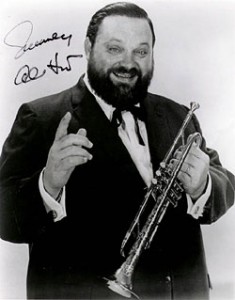 Al Hirt
Al Hirt
November 7, 1922 – April 27, 1999
Al Hirt was an American trumpeter and bandleader. He is best remembered for his million selling recordings of “Java”, and the accompanying album, Honey in the Horn (1963). His nicknames included ‘Jumbo’ and ‘The Round Mound of Sound’. Al was a member of The Louisiana Music Hall of Fame.
Alois Maxwell Hirt was born in New Orleans, Louisiana, the son of a police officer. At the age of six, he was given his first trumpet, which had been purchased at a local pawnshop. He would play in the Junior Police Band with the children of Alcide Nunez, and by the age of 16, Hirt was playing professionally, often with his friend Pete Fountain. During this time, he was hired to play at the local horse racing track, beginning a six-decade connection to the sport.
Hirt’s virtuoso dexterity and fine tone on his instrument soon attracted the attention of national labels and signed with RCA Victor Records. Hirt posted twenty two albums on the Billboard charts in the 1950s and 1960s. The albums Honey In The Horn and Cotton Candy were both in the Top 10 best sellers for 1964, the same year Hirt scored a hit single with his cover of Allen Toussaint’s tune “Java” (Billboard #4), and later won a Grammy Award for the same recording. Both Honey in the Horn and “Java” sold over one million copies, and were awarded gold discs.
His 1964 hit “Java” was used as the soundtrack to a recurring Muppet sketch that was performed on several variety shows as well as episode 122 of The Muppet Show.
07
Nov 11
Galloping Gertie
The 1940 Tacoma Narrows Bridge was the first incarnation of the Tacoma Narrows Bridge, a suspension bridge in the U.S. state of Washington that spanned the Tacoma Narrows strait of Puget Sound between Tacoma and the Kitsap Peninsula. It opened to traffic on July 1, 1940, and dramatically collapsed into Puget Sound on November 7 of the same year. At the time of its construction (and its destruction), the bridge was the third longest suspension bridge in the world in terms of main span length, behind the Golden Gate Bridge and the George Washington Bridge.
Construction on the bridge began in September 1938. From the time the deck was built, it began to move vertically in windy conditions, which led to construction workers giving the bridge the nickname Galloping Gertie. The motion was observed even when the bridge opened to the public. Several measures aimed at stopping the motion were ineffective, and the bridge’s main span finally collapsed under 40-mile-per-hour (64 km/h) wind conditions the morning of November 7, 1940.
Following the collapse, the United States’ involvement in World War II delayed plans to replace the bridge. The portions of the bridge still standing after the collapse, including the towers and cables, were dismantled and sold as scrap metal. Nearly 10 years after the bridge collapsed, a new Tacoma Narrows Bridge opened in the same location, using the original bridge’s tower pedestals and cable anchorages. The portion of the bridge that fell into the water now serves as an artificial reef.
The bridge’s collapse had a lasting effect on science and engineering. In many physics textbooks, the event is presented as an example of elementary forced resonance with the wind providing an external periodic frequency that matched the natural structural frequency, though its actual cause of failure was aeroelastic flutter. Its failure also boosted research in the field of bridge aerodynamics-aeroelastics, the study of which has influenced the designs of all the world’s great long-span bridges built since 1940.
Source: http://en.wikipedia.org/wiki/Tacoma_Narrows_Bridge_(1940)

